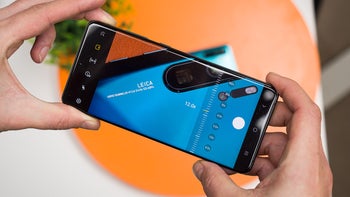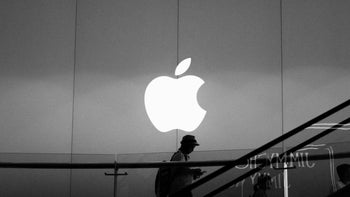Zoom battle: Galaxy S20 Ultra vs Huawei P30 Pro

Smartphone cameras have come a long, long way over the last decade, but they are still developing, getting more potent and useful, as manufacturers find ways to cram more parts into a smartphone and improve imagery with a plethora of software algorithms.
Last year, Huawei wowed us with a 50 times magnification on its Huawei P30 Pro camera. It was capable of delivering 5x lossless optical zoom, then 10x hybrid zoom, and then 50x purely digital crop. Aggressive sharpening in post-processing gave us some pretty usable images. Yes, grainy, flat, and smeared at 50x, but still — that’s quite a lot of zooming for a smartphone camera!
In 2020, Samsung topped that by going up to 100x. So, that’s 4x pure optical zoom, 10x hybrid, and then 100x digital crop. Again, lots of software sharpening to make it all work.
OK, so the Samsung can zoom in more. But does it do it better? We took the Galaxy S20 Ultra and Huawei P30 Pro for a few quick snaps and the differences quickly became apparent. Check these out:
We took four photos with each phone. 1x, 5x, 10x, and 50x — that’s the maximum the Huawei P30 Pro can zoom to.
The 1x picture looks pretty even on both sides. The P30 Pro is a bit more yellowish and its dynamics look a bit more squished. The Galaxy S20 Ultra provides more contrast and a clear blue sky. Sharpness and color accuracy is pretty even on both samples.
When we zoom in to 5x, we get a brighter, sharper, better-exposed shot from the Galaxy S20 Ultra. The P30 Pro picture is kind of duller and not as vibrant. But do notice that something weird happened right towards the middle of the picture on the S20 Ultra — it kind of looks like shaky hand effect, but if that were the case, the whole image would’ve been blurry. It seems like the sharpening algorithm got a bit confused by the streaks in the bricks and did something funky there.
At 10x, the differences are clearly visible. By itself, the Huawei P30 Pro’s picture is pretty impressive for a 10x shot. But when you put the Galaxy S20 Ultra shot right next to it, the contrast is stark. The latter just provides a wider dynamic range, livelier colors, and sharper details.
One effect that might irk you is the digital sharpening that the S20 Ultra applied here. Notice the white aura effect on top of the clock’s arm. That’s a telltale sign for too much oversharpening.
Going up to 50x, you can see a lot more of that oversharpening in the Samsung photo. The Huawei P30 Pro shot may look a bit murkier, but at least it’s more “honest” and doesn’t hit you with jagged edges in every detail.
Up to 10x, Samsung clearly nailed it (if we don’t count the slight mishap with the “shaky effect” in picture 2). At 50x… it’s debatable.
Further down the road, we saw a seagull chilling on a statue. Taking photos of animals without disturbing them is one of the great uses of a zoom lens. Let’s see how the phones fared
At 1x, we — again — have very similar photos. The Galaxy S20 Ultra managed to capture some more color and interesting nuances — like the rising sun, which paints half of the sky yellow, while the cloud above was in blue. The Samsung, again, has more sharpness in the details, but that’s not to say that the P30 Pro’s image is fuzzy. Both look quite nice.
At 10x, both phones fare quite well and you can clearly see the halo effect in Samsung’s oversharpened photo kicking in. Still, there is a benefit to it — all the kinks and blemishes of the statue come right to life, giving us a very good idea of how the statue looks in real life, even at 10x zoom. The P30 Pro picture definitely looks a lot softer.
At 50x, Samsung’s oversharpening went a bit overboard. It starts to look more like a pastel drawing or a picture you passed through an app like Prisma. The Huawei P30 Pro shot is a lot softer, but it at least retains some realism.
Finally, at the office, we decided to zoom in on a picture at the far end of the room.
At 5x, both photos are plenty detailed and with accurate colors, pretty much how we see them in real life. They appear more saturated in the Samsung shot, which can make them more pleasing or distracting — depending on what you prefer — but they are pretty on point as far as actual balance goes.
At 10x, nothing changes much — the Samsung’s colors are a bit more vibrant, and details are slightly sharper. However, there’s no ghosting or annoying artifacts. The P30 Pro’s picture is slightly fuzzier, but not to a point that ruins viewing experience.
At 50x, the Galaxy S20 Ultra’s software sharpening is giving us a better result — it doesn’t go too much off the rails and provides for a more informative image. The P30 Pro is OK for the amount of zoom applied but definitely softer, fuzzier, and duller-looking.
Both of these are pretty impressive up to 10x zoom. The Galaxy S20 Ultra will sharpen the pictures a bit too much, but we do appreciate the detail this gives us, compared to the soft image that comes out of the Huawei P30 Pro.
Last year, Huawei wowed us with a 50 times magnification on its Huawei P30 Pro camera. It was capable of delivering 5x lossless optical zoom, then 10x hybrid zoom, and then 50x purely digital crop. Aggressive sharpening in post-processing gave us some pretty usable images. Yes, grainy, flat, and smeared at 50x, but still — that’s quite a lot of zooming for a smartphone camera!
OK, so the Samsung can zoom in more. But does it do it better? We took the Galaxy S20 Ultra and Huawei P30 Pro for a few quick snaps and the differences quickly became apparent. Check these out:
The town clock
We took four photos with each phone. 1x, 5x, 10x, and 50x — that’s the maximum the Huawei P30 Pro can zoom to.
1x zoom
The 1x picture looks pretty even on both sides. The P30 Pro is a bit more yellowish and its dynamics look a bit more squished. The Galaxy S20 Ultra provides more contrast and a clear blue sky. Sharpness and color accuracy is pretty even on both samples.
5x zoom
When we zoom in to 5x, we get a brighter, sharper, better-exposed shot from the Galaxy S20 Ultra. The P30 Pro picture is kind of duller and not as vibrant. But do notice that something weird happened right towards the middle of the picture on the S20 Ultra — it kind of looks like shaky hand effect, but if that were the case, the whole image would’ve been blurry. It seems like the sharpening algorithm got a bit confused by the streaks in the bricks and did something funky there.
That’s probably a fluke, which wouldn’t re-appear had we re-taken the shot. But this “bug” wasn’t easily visible on the smartphone screen.
10x zoom
At 10x, the differences are clearly visible. By itself, the Huawei P30 Pro’s picture is pretty impressive for a 10x shot. But when you put the Galaxy S20 Ultra shot right next to it, the contrast is stark. The latter just provides a wider dynamic range, livelier colors, and sharper details.
50x zoom
Going up to 50x, you can see a lot more of that oversharpening in the Samsung photo. The Huawei P30 Pro shot may look a bit murkier, but at least it’s more “honest” and doesn’t hit you with jagged edges in every detail.
Up to 10x, Samsung clearly nailed it (if we don’t count the slight mishap with the “shaky effect” in picture 2). At 50x… it’s debatable.
Birds of a feather
Further down the road, we saw a seagull chilling on a statue. Taking photos of animals without disturbing them is one of the great uses of a zoom lens. Let’s see how the phones fared
1x zoom
At 1x, we — again — have very similar photos. The Galaxy S20 Ultra managed to capture some more color and interesting nuances — like the rising sun, which paints half of the sky yellow, while the cloud above was in blue. The Samsung, again, has more sharpness in the details, but that’s not to say that the P30 Pro’s image is fuzzy. Both look quite nice.
10x zoom
At 10x, both phones fare quite well and you can clearly see the halo effect in Samsung’s oversharpened photo kicking in. Still, there is a benefit to it — all the kinks and blemishes of the statue come right to life, giving us a very good idea of how the statue looks in real life, even at 10x zoom. The P30 Pro picture definitely looks a lot softer.
50x zoom
At 50x, Samsung’s oversharpening went a bit overboard. It starts to look more like a pastel drawing or a picture you passed through an app like Prisma. The Huawei P30 Pro shot is a lot softer, but it at least retains some realism.
Indoors
Finally, at the office, we decided to zoom in on a picture at the far end of the room.
5x zoom
At 5x, both photos are plenty detailed and with accurate colors, pretty much how we see them in real life. They appear more saturated in the Samsung shot, which can make them more pleasing or distracting — depending on what you prefer — but they are pretty on point as far as actual balance goes.
10x zoom
At 10x, nothing changes much — the Samsung’s colors are a bit more vibrant, and details are slightly sharper. However, there’s no ghosting or annoying artifacts. The P30 Pro’s picture is slightly fuzzier, but not to a point that ruins viewing experience.
50x zoom
At 50x, the Galaxy S20 Ultra’s software sharpening is giving us a better result — it doesn’t go too much off the rails and provides for a more informative image. The P30 Pro is OK for the amount of zoom applied but definitely softer, fuzzier, and duller-looking.
Conclusion
Both of these are pretty impressive up to 10x zoom. The Galaxy S20 Ultra will sharpen the pictures a bit too much, but we do appreciate the detail this gives us, compared to the soft image that comes out of the Huawei P30 Pro.
However, cranking it up to 50x will rarely give you something to adequately work with. Sure, it's cool to have it for the moments you absolutely need to magnify something, but don't expect images that will wow your social media followers.
Samsung's oversharpening has the tendency to go a bit overboard. Once the edges have become jagged and the halo effect is present, there's very little you can do to manually "fix up" a picture. Huawei tends to stay a bit more "honest" when it's zoomed up to 50x. The pictures are soft and smudgy, but you do have the option to sharpen it to taste via an app like Snapseed or the integrated Instagram tools.
Which one of these phones performed better in your opinion?
Samsung's oversharpening has the tendency to go a bit overboard. Once the edges have become jagged and the halo effect is present, there's very little you can do to manually "fix up" a picture. Huawei tends to stay a bit more "honest" when it's zoomed up to 50x. The pictures are soft and smudgy, but you do have the option to sharpen it to taste via an app like Snapseed or the integrated Instagram tools.
Which one of these phones performed better in your opinion?
































Things that are NOT allowed: